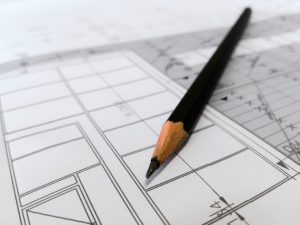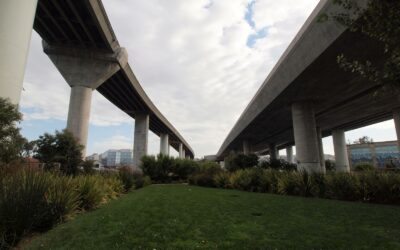Executive Summary. Takeoff is a primary function in the estimation of construction costs. A good takeoff includes more than is plainly seen on the drawings. Here is discussed the definition and purpose of takeoff along with what makes a takeoff good.
What is takeoff? Takeoff is the first step in construction cost estimation. In order for an estimator to calculate the cost of a project, (s)he must know the quantities of all the items that must be built by crews and bought from vendors.
Built by crews. The quantity of pipe (length), windows (each), aggregate (tons), concrete (cubic yards), and flooring (square feet) can all be placed by a crew at a certain production rate. The quantities of all of these materials are necessary to determine crew cost (i.e. the cost of labor and equipment to install these materials). This is because estimating is based on how many items a crew can install in a certain amount of time. For example, windows per day or aggregate per hour.
Bought from vendors. Based on the takeoff quantities, the material itself needs to be bought. Again, we are talking about length of pipe, number of windows, et cetera.

Not so obvious takeoff items. Someone who does good takeoff looks beyond the drawings and into the specification, and also thinks about the building process. A good takeoff person looks for components of the work that will take more effort to build or more material to buy. Here are some examples of looking beyond the printed drawing:
- Concrete formwork – concrete formwork is more than just the cubic yards to buy from the plant. It’s all about contact area of the forms. Are the walls big and tall (gangforms) or small and chopped up (handset forms)? In the parking lot, are the curbs comprised of two vertical faces, or is it curb and gutter where the front curb face form will be hanging? How about wall texture – is there a form liner required, a cast stone into a decorative sidewalk? It goes on and on, but what is necessary to capture accurate costs is the distinction between these different types of concrete in order to allow the estimator to properly price the installation and purchase of materials.
- Geotextiles – erosion control matting on a slope or geotextiles on a road. Anyone can figure out the area of a road, but what about the required overlap of these fabrics? Someone must review the drawings and the specification and the manufacturer’s recommendations to determine the correct quantity.
- Bolt layouts – the drawing may show one hundred park benches to install which the estimator may think is one bolt per bench leg. What if the drawings or specifications call out for four bolts per leg? That’s likely four times the crew cost! Don’t assume the estimator knows how many bolts there are per leg or per bench.
- Water disposal – if your project requires water tests (for leakage) you may have to pay per gallon for disposal, or you may have to know the volume of water in order to adjust the pH before dumping it in a storm drain. Someone’s got to calculate the cubic feet or gallons – that’s you! And what’s more on an item like this is it’s likely not a pay item, so the takeoff person and the estimator need to know the work, not just the drawings!
This list could go on for a few pages. The point is that good takeoff requires construction knowledge and care for detail. Ask questions. Be thorough. Be clear in your presentation of the data. When in doubt, write it out!
My story. I started my estimating career taking off bridge and highway quantities. I’ve also done lots of utility and grading. With online tools and pdf reading software, there are so many great ways to get the information required. And even better, these professional looking takeoffs can then turn into tools for your project management team and their field forces. If you don’t use an on-screen takeoff tool, you should. It’ll change your life. You’ll never go back. My highlighters and scales have seen busier days!
My biggest mistake was forgetting the foundation for a water tank at SeaTac Airport. It wasn’t a mistake in my work, I just flat out missed it! That’s how you get work, right? You can’t include all the costs to be low on bid day!






0 Comments